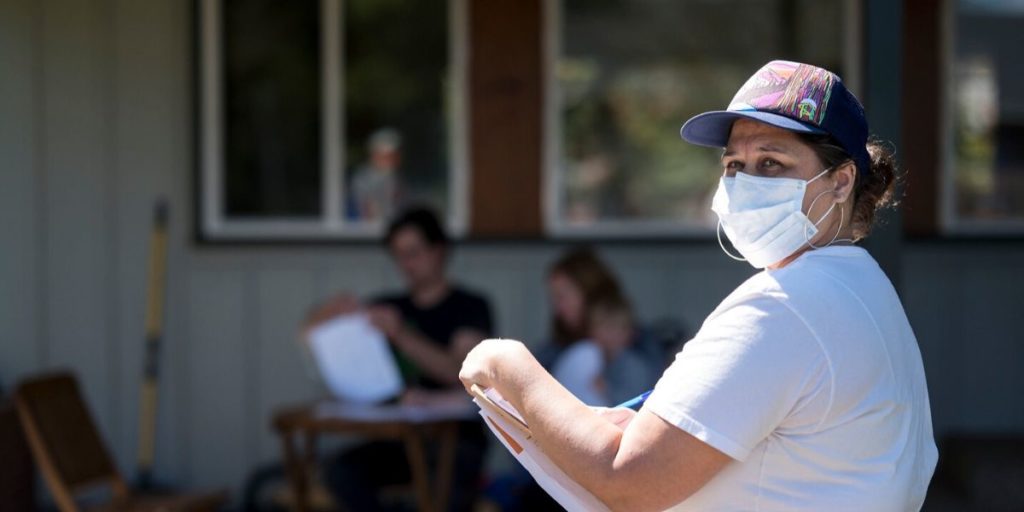
Oregon State University’s seventh round of door-to-door sampling throughout Corvallis by TRACE-COVID-19 field workers on June 5 and 6 suggested three people per 1,000 in the community carried the coronavirus on those days.
Not quite three months earlier, the sixth weekend of Corvallis sampling yielded a prevalence estimate more than four times higher. When the groundbreaking public health project kicked off in Corvallis in April 2020, the first prevalence estimate was two cases per 1,000 and subsequent estimates were in the range of one to three people prior to a 13-per-1,000 estimate from sampling done March 13 and 14.
“As we keep saying, everyone needs to remain vigilant and practice many of the same safety measures we’ve been urging for more than a year,” says TRACE project leader Ben Dalziel, an assistant professor in the OSU College of Science. “Even with a strong majority of the Corvallis community vaccinated, SARS-CoV-2 is still in the community at levels similar to the start of the pandemic.”
During the latest round of door-to-door canvassing, TRACE field workers gathered nasal swab samples from 500 community members at 345 homes; 63% of the households visited agreed to participate. In addition, participants were invited, for the first time, to provide saliva samples for antibody testing; those results are pending.
In addition, field workers offered vaccinations, administered by teams from Samaritan Health Services, to participants age 12 and older who had not yet received any vaccine doses. Five vaccine doses were given.
“There were only 21 TRACE participants over the age of 12 who had not already received at least one dose prior to our survey,” Ben says. “Among the 16 who did not request a vaccine, some may have had factors that precluded them from getting one. If someone declined, we didn’t ask why.”
TRACE’s community prevalence estimate for coronavirus infections is based on a variety of inputs including test sensitivity, number of people tested and where those testing positive live.
Following policy set by the Oregon Health Authority, TRACE does not report the actual number of positive tests from the nasal swab samples if the number is greater than zero but less than 10. For June 5 and 6, there were zero positives.
“It’s encouraging that the prevalence estimate is down from what it was in March but continued caution is clearly warranted,” says TRACE co-leader Jeff Bethel, an associate professor in OSU’s College of Public Health and Human Sciences. “As we approach the 70% statewide vaccination goal set by the governor and the Oregon Health Authority, we need to keep following the guidelines established by public health officials.”
During door-to-door sampling, those who choose to take part are asked to provide information such as their name and date of birth; fill out a simple consent form; and answer a few confidential, health-related questions.
Participants are given a test kit that they administer to themselves inside their home and to their minor children if they want them to take part. The field staff wait outside, and the participants leave the completed test kits outside their front door.
The TRACE project is a collaboration of five OSU colleges – Science, Agricultural Sciences, the Carlson College of Veterinary Medicine, Engineering, and Public Health and Human Sciences – plus the OSU Center for Genome Research and Biocomputing. The project, which has conducted 13 rounds of community sampling overall, works in partnership with the Benton County Health Department in Corvallis and other county health departments around the state.
The diagnostic testing component of TRACE operates through a partnership between the Oregon Veterinary Diagnostic Laboratory, which is located at OSU, and Willamette Valley Toxicology.
TRACE-COVID-19 has received funding from OSU, the David and Lucile Packard Foundation, PacificSource Health Plans and the Oregon Health Authority and has been aided by work from the OSU Foundation and the OSU Alumni Association.
For more information about TRACE, visit the TRACE-COVID-19 website. The site includes a list of frequently asked questions.